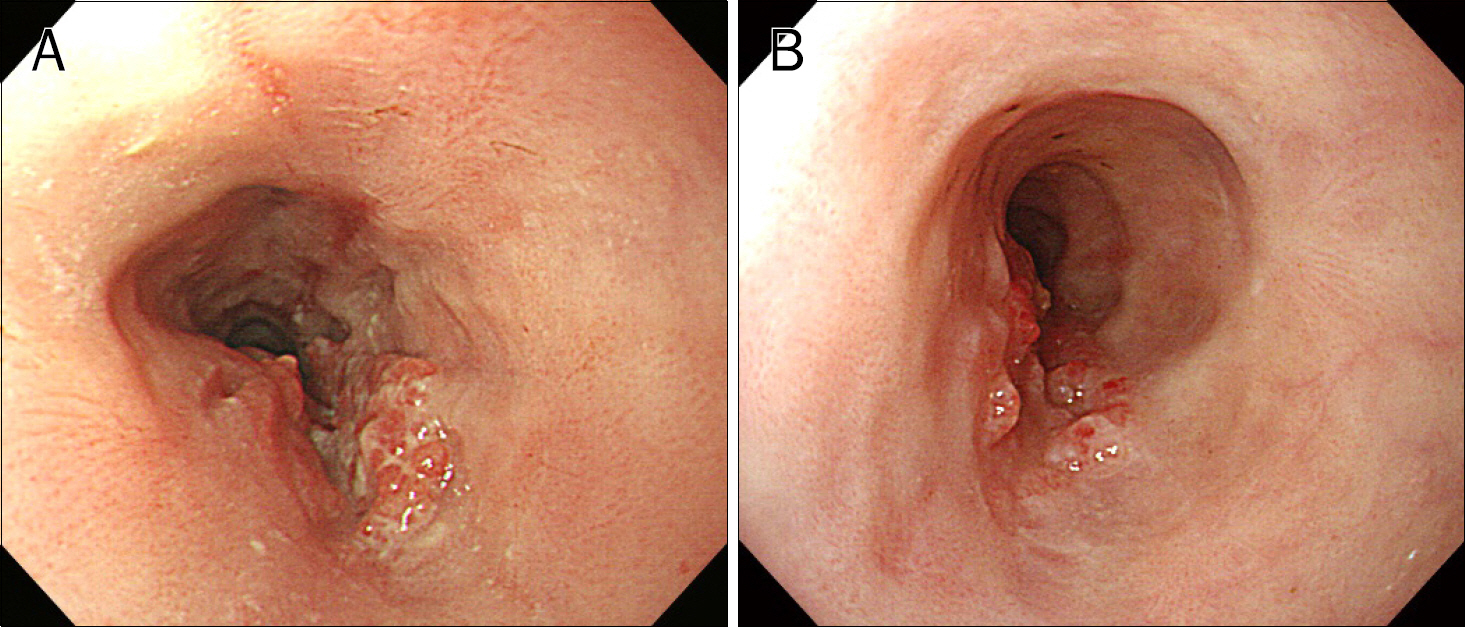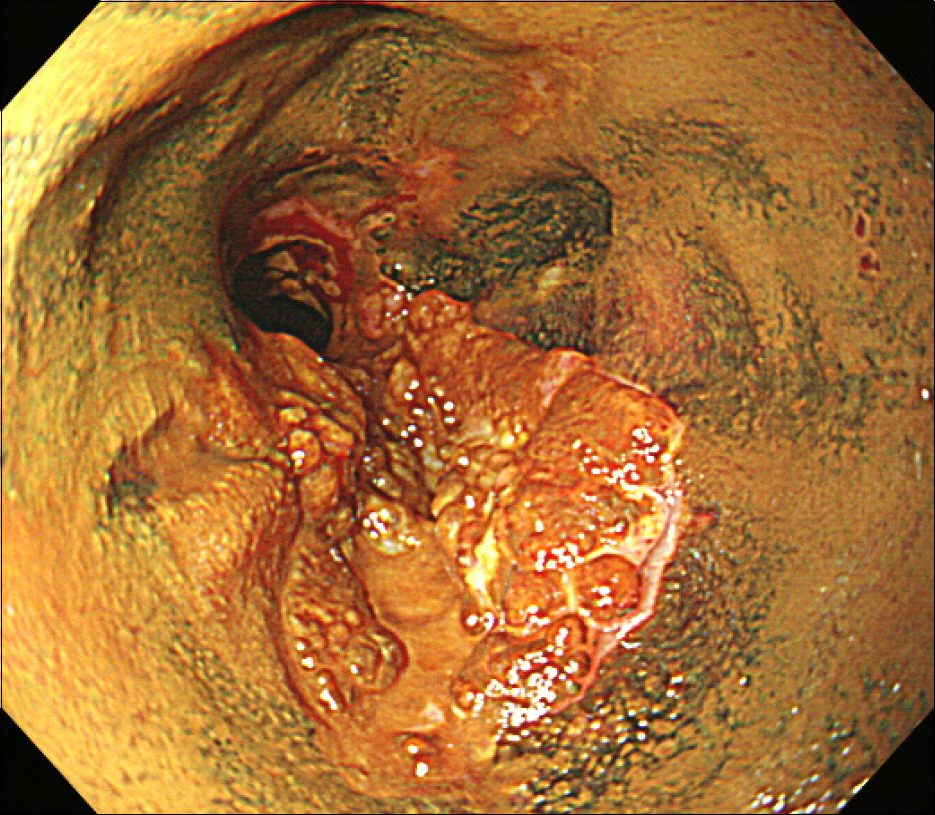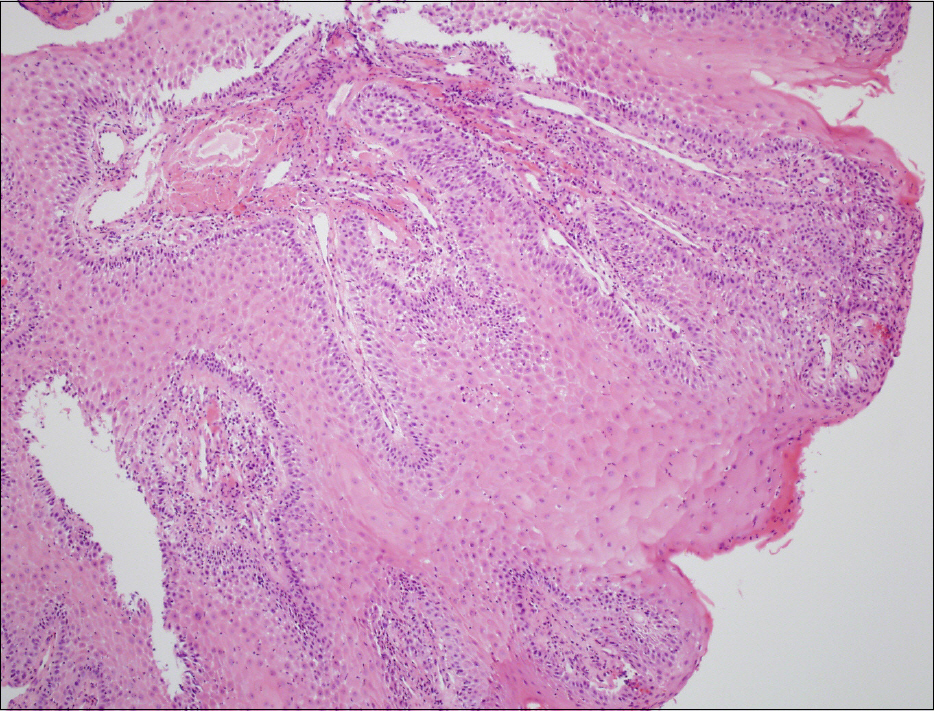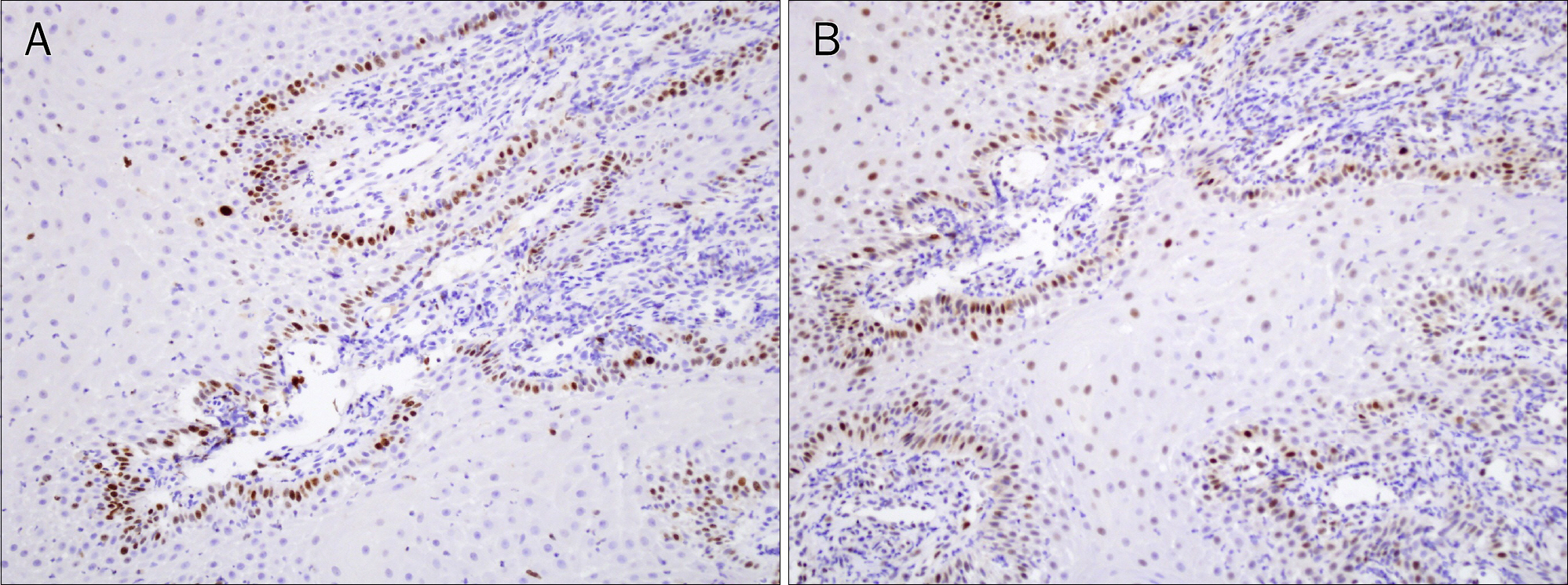Korean J Gastroenterol.
2014 Jun;63(6):366-368. 10.4166/kjg.2014.63.6.366.
Pseudoepitheliomatous Hyperplasia Mimicking Esophageal Squamous Cell Carcinoma in a Patient with Lye-induced Esophageal Stricture
- Affiliations
-
- 1Department of Internal Medicine, Korea University College of Medicine, Seoul, Korea. leesw@kumc.or.kr
- KMID: 2234038
- DOI: http://doi.org/10.4166/kjg.2014.63.6.366
Abstract
- Pseudoepitheliomatous hyperplasia is a benign condition that may be caused by prolonged inflammation, chronic infection, and/or neoplastic conditions of the mucous membranes or skin. Due to its histological resemblance to well-differentiated squamous cell carcinoma, pseudoepitheliomatous hyperplasia may occasionally be misdiagnosed as squamous cell carcinoma. The importance of pseudoepitheliomatous hyperplasia is that it is a self-limited condition that must be distinguished from squamous cell carcinoma before invasive treatment. We report here on a rare case of esophageal pseudoepitheliomatous hyperplasia in a 67-year-old Korean woman with a lye-induced esophageal stricture. Although esophageal pseudoepitheliomatous hyperplasia is infrequently encountered, pseudoepitheliomatous hyperplasia should be considered in the differential diagnosis of esophageal lesions.
MeSH Terms
Figure
Reference
-
References
1. Fu X, Jiang D, Chen W, Sun Bs T, Sheng Z. Pseudoepitheliomatous hyperplasia formation after skin injury. Wound Repair Regen. 2007; 15:39–46.
Article2. Zayour M, Lazova R. Pseudoepitheliomatous hyperplasia: a review. Am J Dermatopathol. 2011; 33:112–122.
Article3. Biswas A, Gey van Pittius D, Stephens M, Smith AG. Recurrent primary cutaneous lymphoma with florid pseudoepitheliomatous hyperplasia masquerading as squamous cell carcinoma. Histopathology. 2008; 52:755–758.
Article4. Lee YS, Teh M. p53 expression in pseudoepitheliomatous hyperplasia, keratoacanthoma, and squamous cell carcinoma of skin. Cancer. 1994; 73:2317–2323.
Article5. Zarovnaya E, Black C. Distinguishing pseudoepitheliomatous hyperplasia from squamous cell carcinoma in mucosal biopsy specimens from the head and neck. Arch Pathol Lab Med. 2005; 129:1032–1036.
Article
- Full Text Links
- Actions
-
Cited
- CITED
-
- Close
- Share
- Similar articles
-
- Cutaneous Metastasis of Esophageal Squamous Cell Carcinoma Mimicking Benign Soft Tissue Tumor
- Balloon catheter dilatation of esophageal strictures
- Esophageal foreign body extraction by biliary stone basket: a case report
- A Case of Esophageal Stricture by Lye that Treated with Esophageal Endoscopic Endoprosthesis
- A Case of Refractory Esophageal Stricture Induced by Lye Ingestion and Treated by Temporary Placement of Newly Designed Self-Expanding Metal Stent and Wetting with Mitomycin C





